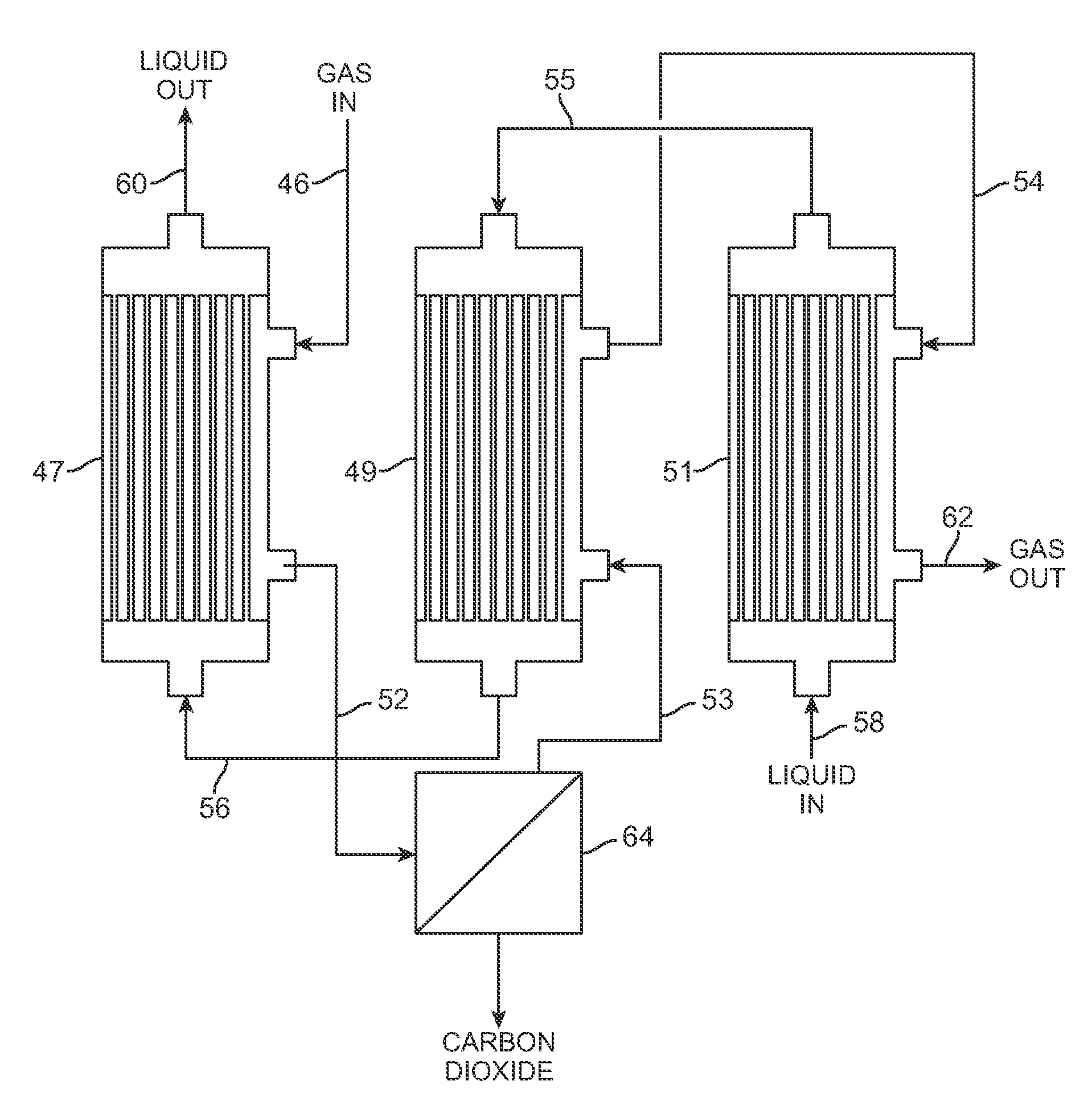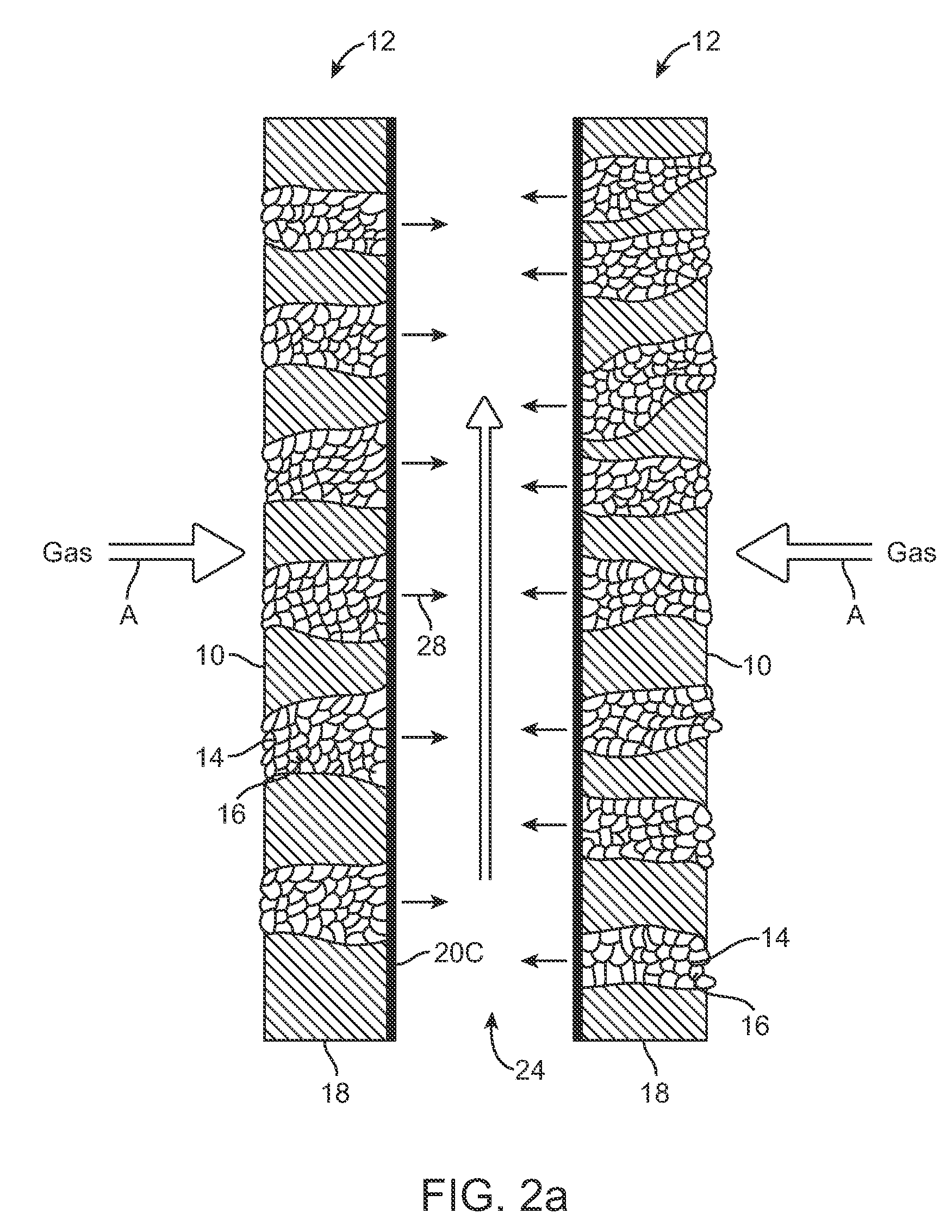Syngas conversion system using asymmetric membrane and anaerobic microorganism
a technology of anaerobic microorganisms and asymmetric membranes, which is applied in the direction of apparatus sterilization, biomass after-treatment, biofuels, etc., can solve the problems of inability of conventional yeasts to ferment csub>5/sub>sugar to ethanol and is completely unfermentable by such organisms, and achieves less permeability and enhances the production of liquid products.
- Summary
- Abstract
- Description
- Claims
- Application Information
AI Technical Summary
Benefits of technology
Problems solved by technology
Method used
Image
Examples
example 1
[0068]A Romicon® membrane cartridge Model CTG, 1″ HF 1.0-43-PM-10 from Koch Membrane Systems (Wilmington, Mass.) is used as a membrane bioreactor for the conversion of carbon monoxide and hydrogen into ethanol. This membrane cartridge contains asymmetric polysulfone hollow fibers with 1.1 mm inner diameter and rated at 10 kDa nominal MWCO. The active membrane surface area of the module is 0.093 m2. The thickness of the bio-pore layer is approximately 400 μm with an effective bio-pore diameters in the range of 10 to 100 μm. The temperature of the membrane cartridge is maintained at 37° C. with flexible heater attached around the cartridge and regulated with a temperature controller. The membrane cartridge has a fiber holdup volume (total volume of the fibers including the lumens) of 90 cm3. The fibers occupy a chamber in the cartridge having a total volume of 180 cm3.
[0069]The membrane module is connected to a 7.5-liter BioFlo® 310 Fermentor from New Brunswick Scientific (Edison, N.J...
example 2
[0072]A MiniKros® membrane module Model M2-100S-601-01N from Spectrum Laboratories (Rancho Dominguez, Calif.) is used as a membrane bioreactor for the conversion of carbon monoxide and hydrogen into ethanol, acetate, butanol and butyrate. This membrane module contains asymmetric polysulfone hollow fibers with 1.0 mm inner diameter and a permeability rated at 100 kDa nominal MWCO. The active membrane surface area of the module is 0.32 m2. The biolayer thickness is approximately 150 μm and the bio-pores have effective diameters in the range of 3 to 30 μm. The membrane cartridge has a fiber holdup volume of 200 cm3. The fibers occupy a chamber in the cartridge having a total volume of 340 cm3. The temperature of the membrane cartridge is maintained at 37° C. with flexible heater attached around the cartridge and regulated with a temperature controller.
[0073]The membrane module is connected to a 7.5-liter BioFlo® 310 Fermentor from New Brunswick Scientific (Edison, N.J.). The fermentor ...
PUM
 Login to View More
Login to View More Abstract
Description
Claims
Application Information
 Login to View More
Login to View More - R&D
- Intellectual Property
- Life Sciences
- Materials
- Tech Scout
- Unparalleled Data Quality
- Higher Quality Content
- 60% Fewer Hallucinations
Browse by: Latest US Patents, China's latest patents, Technical Efficacy Thesaurus, Application Domain, Technology Topic, Popular Technical Reports.
© 2025 PatSnap. All rights reserved.Legal|Privacy policy|Modern Slavery Act Transparency Statement|Sitemap|About US| Contact US: help@patsnap.com



